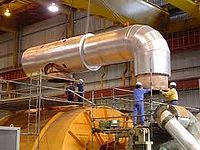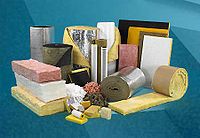Difference between revisions of "Heat Insulators"
Jump to navigation
Jump to search
(Created page with "Category:Heating{{Knoppen}} <noinclude><!------------------------------------------------ * READ THIS FIRST * Only edit this page if you can improve the content. * Improper ...") |
PurplePen19 (talk | contribs) |
||
| Line 7: | Line 7: | ||
* Please start editing this page after the /noinclude | * Please start editing this page after the /noinclude | ||
* -------------------------------------------------></noinclude> | * -------------------------------------------------></noinclude> | ||
[[File:Heat insulators1.jpg|thumb|200px|right|Industrial Heat Insulators]] | |||
[[File:Heat insulators2.jpg|thumb|200px|right|Heat Insulators: Space Suit]] | |||
[[File:Heat insulators3.jpg|thumb|200px|right|Heat Insulators: House Care]] | |||
'''Heat insulators''' are simply materials that don't allow heat to pass through it. Some examples of these materials are woods, glass and ceramic. Ceramics are the most commonly used thermal (heat) insulators. | |||
==Benefits== | |||
Insulation is the building component which controls temperature directly affecting the movement of moisture to and from building spaces. It provides the principal resistance to air leakage. Insulation provides energy savings, condensation control, noise control and enhanced light reflectivity that will remain with the building over the life of the structure. | |||
==Video== | |||
<youtube>CRNAWaZ2pso</youtube> | |||
Latest revision as of 08:10, 27 August 2012
Heat insulators are simply materials that don't allow heat to pass through it. Some examples of these materials are woods, glass and ceramic. Ceramics are the most commonly used thermal (heat) insulators.
Benefits
Insulation is the building component which controls temperature directly affecting the movement of moisture to and from building spaces. It provides the principal resistance to air leakage. Insulation provides energy savings, condensation control, noise control and enhanced light reflectivity that will remain with the building over the life of the structure.
Video


